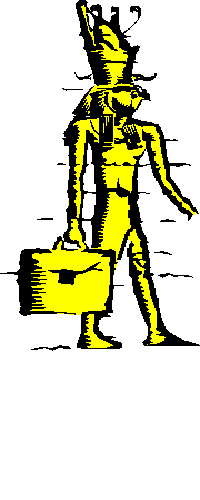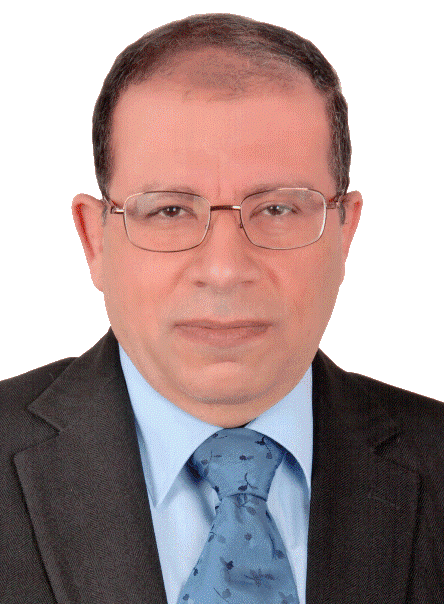Professor of Rhinology & Skull Base Surgery, Ain Shams University, Cairo, Egypt
Department of Oto-Rhino-Laryngology, Faculty of Medicine, Ain Shams University, Cairo, Egypt.
7- Endoscopic Powered Adenoidectomy
"Adenoids" is pathological
hypertrophy of nasopharyngeal lymphoid tissues sufficient to cause obstruction
of nasopharynx and/or eustachian dysfunction. Adenoidectomy is surgical
reduction of such hypertrophy. It involves excision of the lymphoid tissues
obstructing the airway followed by hemostasis. While curette excision is the
traditional method of excision, powered shavers offer higher precision in
excision. When coupling endoscopy with powered excision, safety is added to
precision, and the surgeon can selectively clear lymphoid tissue from around the
eustachian tubes and choanae.
Selective powered excision of adenoid hypertrophy may be as complete as needed
leaving no remnants in the routine adenoids patient or partial in selected
patients. In cases of incompetent palate such as submucous cleft palate, short
palate and scared palate, adenoid hypertrophy may help velopharyngeal closure
and therefore adenoidectomy has generally been considered as a contraindication.
Combined adenoidal hypertrophy (causing nasal and eustachian tube dysfunction)
and palatal incompetence is a surgical dilemma because adenoidectomy can worsen
palatal incompetence. The price the child has to pay to keep his or her voice
acceptable is to leave the adenoid untouched and remain suffering from nasal and
eustachian obstruction with sequel of sinusitis and middle ear problems.
Endoscopic powered adenoidectomy is thought be an ideal solution for this
dilemma providing selective removal of the obstructive part of the adenoids
around the eustachian tubes orifices and at the choanae and at the same time
keeping the part of the adenoid at Passavant ridge helping velopharyngeal
closure and palatal competence.
Methods:
Surgery is done in the traditional tonsillectomy position which is familiar
to all ENT surgeons (Fig. 1).

Fig. 1: Routine tonsillectomy position.
General anesthesia with cuffed oral endotracheal tube and hypopharyngeal pack is used. 4 mm 00 or 300 endoscope is passed alongside the inferior turbinate parallel to nasal floor till the choana offering an excellent view of the nasopharyngeal walls and the adenoids (Fig. 2 & 3).

Fig. 2: Tonsillectomy position without retracting soft palate (A). Endoscope introduced along the nasal floor (B). 1200 Blade (C) and 900 Blade (D) introduced through the mouth with their curves nicely place the cutting windows exactly at the adenoids without retracting the soft palate.
The XPS RAD? 1200 and the 900 3.5 mm curved blades (Trademarks of Medtronic Xomid Inc., Medtronic USA, Inc., 6743 Southpoint Drive North, Jacksonville, FL 32216, USA) have been found extremely beneficial when introduced from the mouth with their curves exactly turning around the soft palate with no need to retract the soft palate (Fig. 2). The cutting window of both blades is perfectly visualized by the endoscope and selective removal of adenoid tissues is easily obtained at intended spots especially difficult spots around the eustachian tube orifice and at the choana; areas hard to be cleared with the traditional curette technique (Fig. 3). The M4 Rotatable RAD 900 curved plate with its 3600 tip rotation offers more as regards cleaning difficult spots.

Fig 3: The endoscope is passing along the nasal floor (1) reaching the choana (2) & (3) visualizing the adenoids (4). The curved powered blade is introduced through the mouth reaching the adenoid (5) up to the choana (6). AD=Adenoids, ET=Eustachian tube orifice, IT=Inferior turbinate, N. Fl.=Nasal floor, SF=Soft palate, S=Nasal septum.
Hemostasis is effectively
managed with packs and sometimes with cauterization of bleeders under optimal
endoscopic vision using suction bipolar forceps introduced through the mouth
and/or insulated monopolar suction tube introduced through the nose (Fig. 4).

Fig 4: The curved power blade easily reaches and cleans adenoid tissues near the eustachian tube orifice (1) and at the choana (2). Hemostasis is achieved with bipolar suction forceps from around the soft palate (3) or with monopolar insulated suction tube from one of the nasal fossae (4). ET=Eustachian tube orifice, L Ch=Left choana, Pk=Hypopharyngeal pack, SF=Soft palate, S=Nasal septum.
Video 1 demonstrates Endoscopic Powered Adenoidectomy with XPS RAD 1200 blade
Results & Conclusions
Endoscopic powered adenoidectomy with the XPS RAD? 900 and 1200
blades has been found to be a safe, adequate and precise technique for
adenoidectomy. The surgeon can selectively and completely remove adenoid tissues
from around the eustachian tubes orifices and choanae and ensure precise
hemostasis under optimal endoscopic visual control.
Moreover, preliminary results of this technique showed that it may offer
benefits in surgery for some patients with combined adenoidal hypertrophy
(causing secondary sinusitis and/or otitis media) and palatal incompetence.
Endoscopic powered partial superior adenoidectomy offering selective removal of
the obstructive part of the adenoids around the eustachian tubes and at the
choanae and at the same time preserving the part of the adenoid at Passavant
ridge may clear nasal and tubal obstruction without worsening velopharyngeal
closure (Fig. 5).

Fig. 5: (1) Adenoids in a 7 y.o. female child with palatal incompetence grade I-II. (2) The curved power blade reaching the adenoid tissues. (3) Selective removal of the parts of the adenoids at the choana and near the eustachian tube orifice and leaving the adenoid part at Passavant ridge. (4, 5& 6) show soft palate closure in succession against adenoid remnants at Passavant ridge during swallowing at the end of surgery. AD=Adenoids, ET=Eustachian tube orifice, SF=Soft palate, ADR=Adenoid remnants at Passavant ridge.
Video 2 demonstrates Endoscopic Powered Adenoidectomy with XPS RAD? 900 blade in a female child with palatal incompetence grade I-II.


